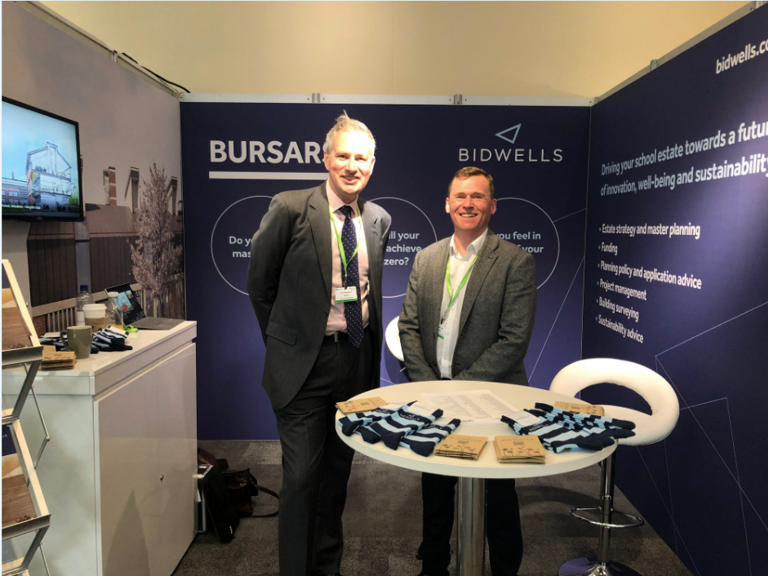How you can enhance your Independent school estate - Q&A with Bidwells’ education experts
Navigating the world of school estate management, construction and planning can feel like a minefield, especially when there are constraints on your existing site and a demand for modern facilities. We’ve asked experts from our Project Management, Planning and Building Surveying teams some questions about how to best manage your independent school estate.
What are the key built environment challenges that independent schools are currently facing?
Tom Sampson, Project Management: Schools face the task of needing to continually update and upgrade their existing facilities to attract new pupils (and parents) and to avoid falling behind competitors. When deciding where to invest they face several key challenges, including whether to construct a new building which could potentially require demolition, or to refurbish existing buildings within the estate.
Refurbishment is great from a net-zero perspective but can take longer and be more expensive. New builds often have a greater impact on the environment due to the cost of embodied carbon. However, we recognise that each school’s case is unique and the decision needs to consider the likely local planning authority requirements and the subsequent impacts on design.
How can a school maintain its traditional architecture whilst providing efficient buildings fit for a modern curriculum?
Jonathan Bainbridge, Planning: Part of the challenge is getting the right advice early in the design process. Linking heritage advice into an initial planning strategy shows the local planning authority that your proposal responds to the surrounding estate. At the same time, we provide direction to our design teams to ensure that carbon reduction goes over and above Building Regulations targets and ensures that a school’s sustainability goals, and planning policy requirements, are achieved or exceeded – whether this is a retrofit or redevelopment approach.

Bedford School – Niall McLaughlin Architects, 2022 (CGI produced by Picture Plane)
Billy Palmer, Planning: We had success with this strategy at Bedford School in 2022, with the approval of Niall McLaughlin Architects’ (Sterling Prize Winners 2022) new teaching building. Within the Bedford Conservation Area and surrounded by several Grade II and Grade II* Listed heritage assets, the building replaces existing Victorian villas which were deemed unfit for modern teaching methods. This was paired with achieving significant carbon reduction through a fabric first approach, maximising natural daylight and the use of ground source heat pumps.
What does PPM stand for and how can it benefit your school?
Adam Tew, Building Surveying: PPM refers to Planned Preventative Maintenance. This is maintenance carried out in a regular and systematic way to keep the structure and fabric of the building and mechanical and electrical services in good condition. The opposite of planned maintenance is reactive maintenance. This approach entails repairing/replacing elements of a building only when they are broken or have stopped working.
Preparing Planned Preventative Maintenance Plans will reduce your operational building costs and allow your school to operate as normal. A reactive approach to maintenance is often costlier and can result in systems critical for business failing at inopportune moments – like exam periods.
What are the first steps towards decarbonising a school?
Charu Gupta, Sustainability and Energy Consultancy: Decarbonising schools is critical in the fight against climate change on a local and a global level. Starting the process with applying a passive approach like fabric first, which includes upgrading insulation, heating and ventilation systems and lighting can improve energy efficiency and reduce energy consumption. Installing renewable energy sources such as solar panels or wind turbines can also reduce carbon emissions and promote a sustainable future. In addition, sustainable transport options, such as cycling or walking can reduce carbon emissions and promote healthy lifestyles. Implementing green policies at schools and reducing waste can also contribute to decarbonisation efforts.
Engaging with stakeholders, including teachers, students, parents, and local communities, is crucial to building support and momentum for decarbonisation efforts. By taking these steps, schools can play a significant role in promoting a sustainable future and reducing the impact of climate change on our planet.
It’s vital for independent schools to seek expert advice so that they can run efficiently and reduce costs in the long term. This will help to secure the next generation of modern teaching within existing estates and to help increase the attractiveness of a school’s overall offer to prospective students and parents.
Get in touch
We're attening the ISBA conference 2023

Our experts will be on hand to advise on; master planning, estate strategy, funding, project management, sustainability, building surveying, planning policy and application advice.
Drop by our stand number 99
Our Teams
Project Management
Planning
Building Surveying
Heritage
Stay in the loop
Sign up to receive personalised property alerts, and to hear the latest news, insight and advice from our experts
Keep me informed

